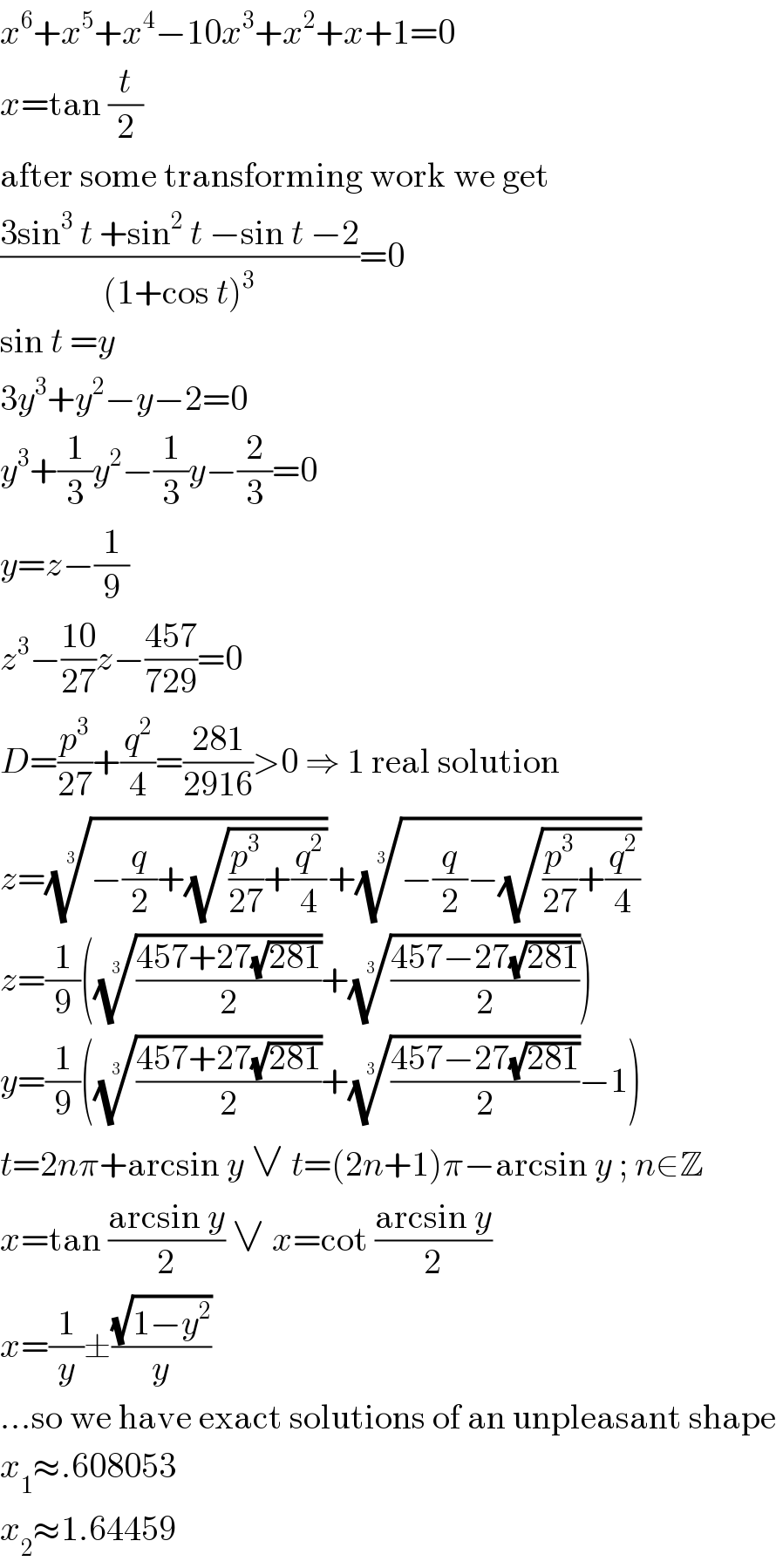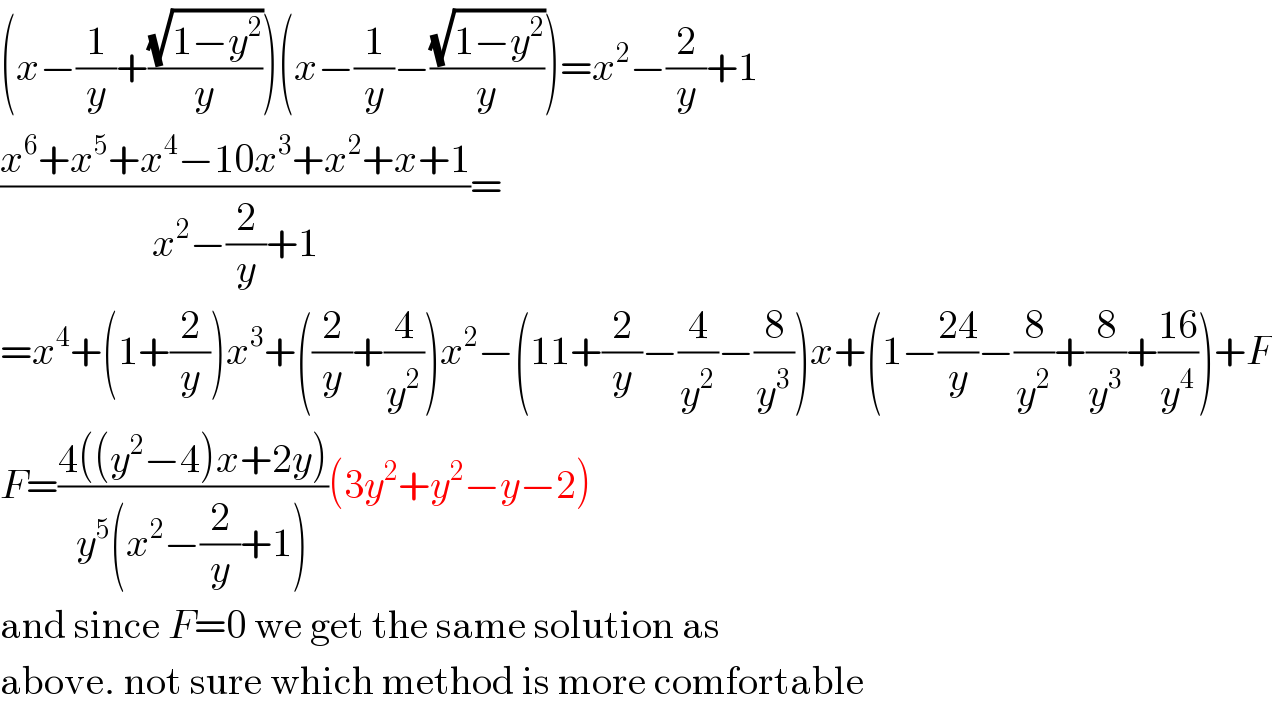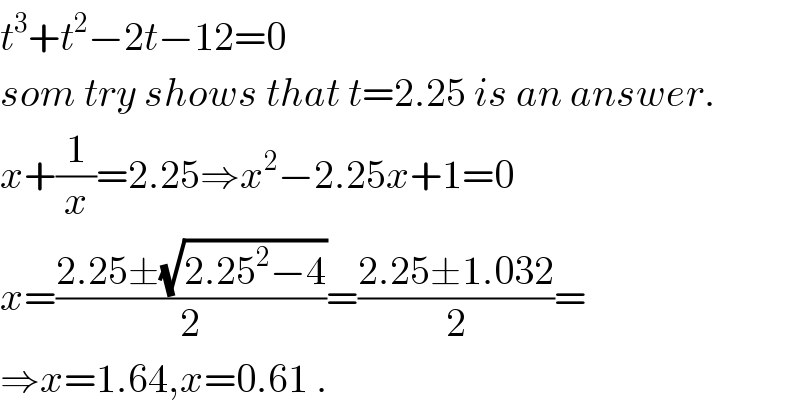
Question and Answers Forum
Question Number 48294 by behi83417@gmail.com last updated on 21/Nov/18

Commented by MJS last updated on 22/Nov/18

Commented by MJS last updated on 22/Nov/18

Commented by behi83417@gmail.com last updated on 22/Nov/18

Answered by ajfour last updated on 22/Nov/18
![let (1/x) = t ⇒ (1+t)((1/t)+t)((1/t^2 )+t)=12 or (t+1)(t^2 +1)(t^3 +1)=12t^3 ⇒ if α is a root, then (1/α) is also a root. ⇒ Π(x−α)(x−(1/α))=0 or Π[x^2 −(α+(1/α))x+1]=0 let α+(1/α) = p , β+(1/β) = q , γ+(1/γ)=r Π(x^2 −px+1)=0 x^6 −(p+q+r)x^5 +(3+pq+qr+rp)x^4 −(p+q+r+pqr)x^3 +(3+pq+qr+rp)x^2 −(p+q+r)x +1 = 0 given eq. (x+1)(x^2 +1)(x^3 +1)=12x^3 ⇒ x^6 +x^5 +x^4 −10x^3 +x^2 +x+1=0 ⇒ p+q+r = −1 pq+qr+rp = −2 pqr = 11 p,q,r are then roots of t^3 +t^2 −2t−11=0 should be t^3 +t^2 −2t−12 = 0 _________________________ BUT HOW ? _________________________ t=p ≈ 2.19479 (only one real root). ⇒ α+(1/α) = p α^2 −pα+1 = 0 some error ...](Q48314.png)
Answered by tanmay.chaudhury50@gmail.com last updated on 22/Nov/18

Commented by behi83417@gmail.com last updated on 22/Nov/18

Commented by tanmay.chaudhury50@gmail.com last updated on 22/Nov/18

